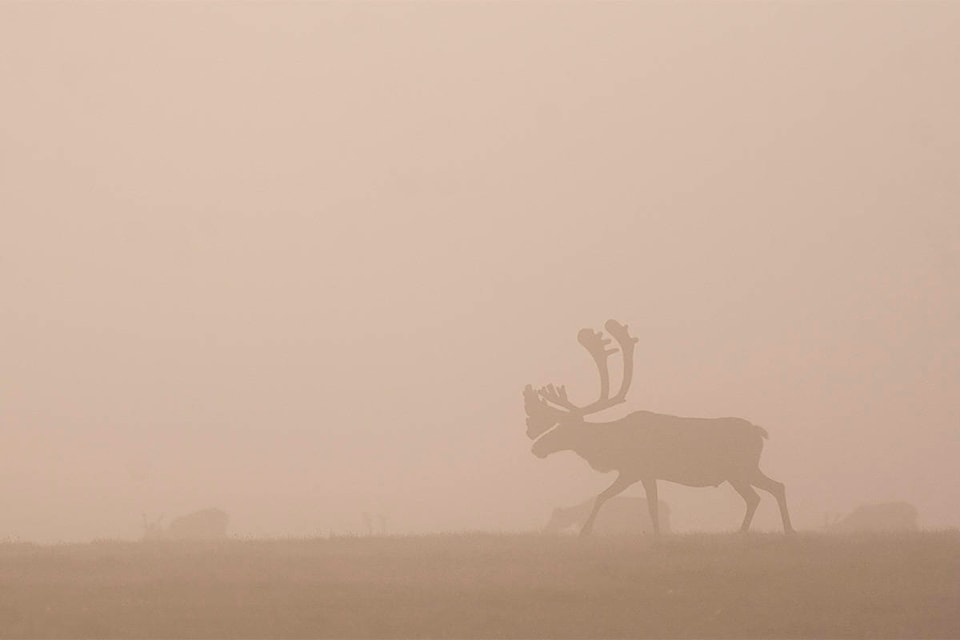The U.S. government wants to give the oil and gas industry total access to a piece of land in the Arctic National Wildlife Refuge (ANWR), according to the final environmental impact statement (EIS).
While the EIS, released on Sept. 12, concedes potential impacts, it plows ahead with the “most aggressive” development scenario, said Kris Statnyk, a Vancouver-based lawyer and member of Vuntut Gwitchin First Nation.
“The regulators are still quite clearly captured by politics,” he said. “It’s consistent with the Trump administration’s bravado and sort of U.S. energy dominance agenda.”
The EIS brings energy development closer to fruition in the coastal plain of ANWR, a roughly 1.6 million-acre area (the refuge is 19 million acres.) Its draft version laid out four main options on how to go about portioning out lease sales there. The final iteration decides on one. There are 30 days from publication until it is officially signed-off on.
“Post-lease activities in the program area,” the EIS says, “have the potential to affect terrestrial mammals through habitat loss and alteration, behavioral disturbance and displacement, and injury or mortality as a result of oil and gas exploration and development.”
Terrestrial mammals include polar bears and the Porcupine caribou herd, which the Gwich’in in both Canada and the U.S. have been fighting to protect. Foundational to their culture, they rely heavily on the migratory animals for subsistence uses.
The EIS says potential impacts, as a result of activity in the coastal plain, could result in habitat loss, displacement and den disturbances.
“(F)uture infrastructure development, even with low levels of human activity in the area of concentrated calving for the PCH, could lead to displacement of calving caribou and decreased calf survival or a decline in caribou body condition,” it says.
In order to mitigate potential impacts, the EIS says major construction activities would be suspended between May 20 and June 20; limits would be placed on vehicle traffic, so, too, would flight altitudes. Ramps would be placed over pipes to enable the herd to pass.
Roughly 359,000 acres of the program area would be closed to surface occupancy. Stipulations, it says, could be waived if deemed necessary.
The option the U.S. Department of Interior has settled on has the fewest acres with no surface occupancy provisions compared to the others, the EIS says.
“There are many uncertainties associated with projecting future petroleum exploration and development,” it says, including recoverable oil, timing of development and future prices of oil and gas.
To address these, the Bureau of Land Management (BLM) has made “reasonable assumptions” on previous 2D exploration work in the area and “its own knowledge of the almost entirely unexplored petroleum endowment of the Coastal Plain and current industry practice, and professional judgment.”
Opponents of the oil and gas program the News spoke to said the same thing: They’re not surprised with the EIS, and questions about its legality are swirling.
Athan Manuel, director of the Lands Protection Program at Sierra Club, said the U.S. government isn’t showing any restraint.
“We think it’s illegal, for one,” he said, because officials didn’t properly consult Indigenous people, particularly the Gwich’in, during the review process.
“That’s one of the legal avenues we’re going to look into,” Manuel said. “We do think this has been an illegal move that violates the rights of the Gwich’in and shouldn’t have been pursued by Congress, certainly shouldn’t be pursued by the Trump administration.”
The Trump administration has been bullheaded in its approach to see the coastal plain mined, said Malkolm Boothroyd, campaigns coordinator with Canadian Parks and Wilderness Society, Yukon.
“We’ve known all along that the U.S. government is determined to auction off the Arctic refuge to the oil industry,” he said. “It still hurts to read that and to imagine the terrible consequences that could happen if this is allowed to go ahead.
“The big question now is, is this legal?”
Hours before the EIS released, Indigenous people and environmental groups saw a breakthrough of sorts. A bill introduced by Jared Huffman, a California Democrat, earlier this year passed the House of Representatives. It seeks to undo the language in the 2017 tax act that legislated oil and gas development in part of the refuge.
Manuel said that the EIS was released on the same day Huffman’s bill passed the House isn’t a coincidence. He said it’s likely an attempt to undercut momentum that’s been building to protect the refuge.
“We do think that (the passage of the bill) should remind companies that this is a very controversial issue and that the U.S. House, which represents the American public, is on our side on this issue,” he said.
The bill, called Arctic Cultural and Coastal Plain Protection Act, goes to the Senate next, which is Republican controlled.
U.S. legislation under the tax act stipulates that one lease must be issued in four years and that no fewer than two lease sales, each to include at least 400,000 acres with the highest potential of hydrocarbons, must occur by 2024.
Contact Julien Gignac at julien.gignac@yukon-news.com
